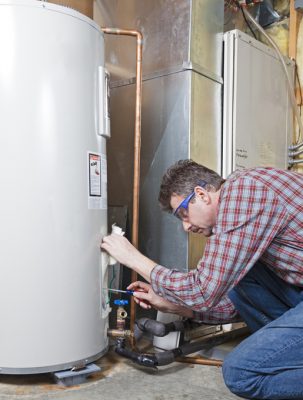Best Practices for Maintaining Your Home's Hot Water SystemExpert Tips for Caring for Your Home's Hot Water System
Best Practices for Maintaining Your Home's Hot Water SystemExpert Tips for Caring for Your Home's Hot Water System
Blog Article
Everybody has got their own way of thinking about How to Maintain a Hot Water Heater in a Few Simple Steps.

Hot water is crucial for day-to-day comfort, whether it's for a rejuvenating shower or cleaning recipes. To ensure your warm water system runs efficiently and lasts longer, normal maintenance is crucial. This write-up provides useful pointers and understandings on how to preserve your home's hot water system to stay clear of disruptions and expensive fixings.
Intro
Keeping your home's warm water system might seem overwhelming, yet with a few basic actions, you can ensure it operates efficiently for several years to come. This guide covers whatever from comprehending your hot water system to do it yourself upkeep tips and understanding when to employ specialist help.
Significance of Maintaining Your Warm Water System
Normal maintenance not only prolongs the life expectancy of your hot water system however additionally guarantees it runs efficiently. Overlooking maintenance can cause lowered performance, greater energy bills, and even premature failure of the system.
Indications Your Hot Water System Requirements Upkeep
Recognizing when your warm water system requires focus can protect against significant issues. Look out for signs such as irregular water temperature level, odd sounds from the heating system, or corroded water.
Recognizing Your Warm Water System
Prior to diving right into upkeep jobs, it's practical to recognize the standard elements of your warm water system. Normally, this consists of the hot water heater itself, pipes, anode rods, and temperature controls.
Monthly Maintenance Tasks
Regular monthly checks can help capture small concerns prior to they intensify.
Flushing the Water Heater
Flushing your water heater gets rid of debris accumulation, enhancing effectiveness and lengthening its life.
Monitoring and Changing Anode Rods
Anode rods avoid corrosion inside the container. Evaluating and changing them when worn is important.
Examining and Adjusting Temperature Level Setups
Changing the temperature setups makes certain ideal performance and safety.
Do It Yourself Tips for Maintenance
You can perform numerous upkeep tasks yourself to maintain your warm water system in top condition.
Checking for Leakages
On a regular basis examine pipelines and connections for leaks, as these can cause water damage and higher costs.
Evaluating Pressure Alleviation Valves
Evaluating the stress relief valve guarantees it works correctly and protects against extreme pressure build-up.
Protecting Pipes
Shielding hot water pipelines minimizes warm loss and can conserve energy.
When to Call a Professional
While do it yourself maintenance is valuable, some problems require specialist proficiency.
Complicated Issues Calling For Professional Aid
Examples consist of major leakages, electrical troubles, or if your water heater is constantly underperforming.
Regular Professional Maintenance Perks
Specialist maintenance can consist of complete examinations, tune-ups, and ensuring compliance with security criteria.
Verdict
Regular maintenance of your home's warm water system is crucial for performance, longevity, and expense financial savings. By adhering to these tips and knowing when to seek expert aid, you can ensure a dependable supply of hot water without unforeseen disturbances.
How to Maintain an Instant Hot Water Heater
Before tinkering with your hot water heater, make sure that it’s not powered on. You also have to turn off the main circuit breaker and shut off the main gas line to prevent accidents. Also turn off the water valves connected to your unit to prevent water from flowing into and out of the appliance. 2. When you’re done, you have to detach the purge valves’ caps. These look like the letter “T” and are situated on either side of the water valves. Doing so will release any pressure that has accumulated inside the valves while at the same time avoid hot water from shooting out and burning your skin. 3. When the purge valves’ caps are removed, you have to connect your hosing lines to the valves. Your unit should have come with three hoses but if it didn’t, you can purchase these things from any hardware or home repair shops. You can also get them from retail stores that sell water heating systems. Read the user’s manual and follow it to complete this task properly. When the hosing lines are connected, open the purge port’s valves. 4. You should never use harsh chemical cleaners or solutions when cleaning your unit. Make use of white vinegar instead. It should be undiluted and you’ll probably use about 2 gallons. 5. Now flush your water heater. This task should probably take about 40 minutes. We can’t give you specific directions for this because the procedure is carried out depending on the type, model and brand of your heater. With that being said, refer to the user’s manual. 6. When you’re done draining the unit, you have to turn off the purge port valves again. Remove the hosing lines that you earlier installed on each of the water valves. Put the valve caps (purge port) back in their respective places and be very careful so as not to damage the rubber discs that are found inside these caps. 7. Now that everything’s back in place, check your user’s manual again to find out how to reactivate your water heating system. 8. Once it is working, turn one of your hot water faucets on just to let air pass through the heater’s water supply pipes. Leave the tap on until water flows smoothly out of it. https://www.orrplumbing.com/blog/2014/september/how-to-maintain-an-instant-hot-water-heater/

We were made aware of that report on Tips For Maintaining Your Hot Water Heater through a good friend on a different web property. Appreciated our blog entry? Please quickly share it. Help another person check it out. Thank you for going through it.
Schedule Service Pickup Report this page